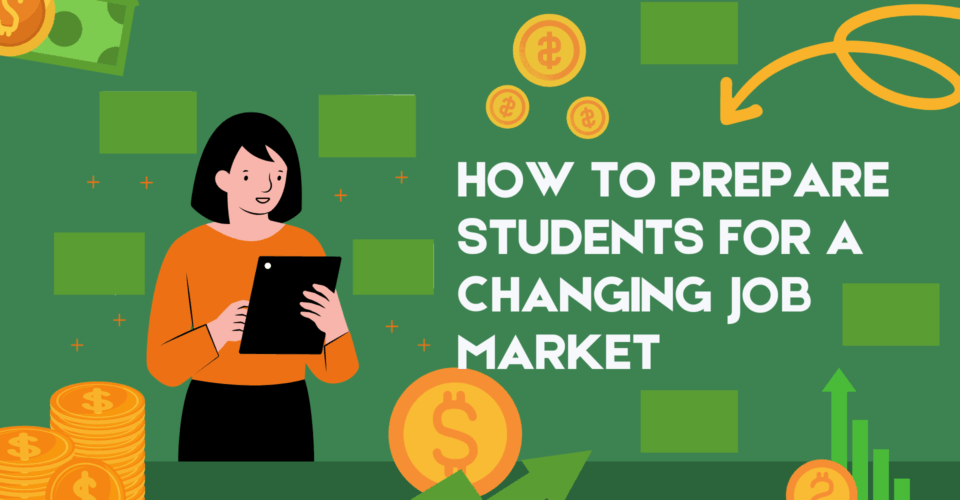Here’s a statistic that reflects a troubling new reality: Only half of recent college graduates participated in an internship, according to data from Handshake.
Current students who aren’t interns or don’t plan to become interns most often cited a lack of time for this extracurricular pursuit. Even those who do land internships find themselves stretched thin, with more than half juggling coursework, one third balancing part-time jobs and 1 in 8 putting in 40-plus hours each week at their internship. Meanwhile, demand is outpacing supply. Internship postings on Handshake dropped 15% over the last two years as applications surged.
While work experience has become table stakes for college graduates, too few are getting it. Handshake’s new data aligns with previous research that shows just how fragmented and inequitable work-based learning has become.
College students are expected to navigate this landscape largely on their own, squeezing experience into the margins of their education instead of receiving it as an organic, core part of their college experience. That’s largely because higher education still treats work-based learning as optional or peripheral when, in reality, it is one of the most critical drivers of post-graduate success.
Higher education needs to flip the script. Gaining work experience during college should be recognized not as a bonus but as a critical competitive advantage. Real-world experience, especially when integrated into academic learning, gives students context, confidence and connections that help them apply what they’re learning in the real world and build the kind of skills that employers say matter most.
But not all work experience is created equal. Too many internships are unpaid, inaccessible or disconnected from a student’s field of study. For the majority of students who are working while they’re in college — often out of necessity — they’re employed in roles that often do not help them build toward a long-term career.
More from UB: Achieving long-term value and ROI through campus design
First-generation college students often find themselves trapped by a system that favors those who can afford to forgo a paycheck and work for experience. Research from Strada shows that first-generation students are far more likely to work 20 hours per week during college, which leaves them little time or energy to pursue unpaid or low-paid internships. In contrast, continuing-generation learners are more likely to participate in internships and less likely to work.
Creating more internships won’t solve this problem. The solution is to make real-world work experience a part of every student’s educational journey. With embedded work-based learning, students can gain direct and practical experience through employer projects without having to pause their studies, disrupt their part-time jobs or stretch themselves even thinner. These experiences often can be completed asynchronously, don’t require relocation and can be aligned with students’ academic schedules and career goals.
Several institutions are moving beyond pilot programs to scale work-based learning across disciplines, embedding it as a core component of their educational models. At Salem State University in Massachusetts, what began as an initiative in the accounting department has evolved into a campus-wide strategy. Faculty across computer science, management, and marketing now regularly use an experiential learning platform to connect students with real-world employer projects—with institutional grants and administrative support ensuring consistent access across departments and semesters.
Similarly, the University of West Alabama has expanded its use of embedded work-based learning from a targeted initiative in sport management to a broader strategy that spans multiple academic programs. By building infrastructure that supports employer collaboration and scalable project-based learning, the university is giving students hands-on experiences that align with their career goals without requiring them to sacrifice time, wages, or academic progress.
When work-based learning is integrated directly into coursework, students don’t have to choose between learning and earning or between academic success and career readiness. They’re able to graduate with both a degree and a portfolio of real-world experience that helps them stand out.
However, scaling this kind of learning will require deeper collaboration between colleges and employers. Solving the work experience gap isn’t something that higher education can do alone—nor should it. Employers must be invited into the classroom, co-creating opportunities that align with both academic goals and workforce needs. That means rethinking outdated divisions between school and work, and recognizing work-based learning not as an optional add-on, but as an essential, integrated component of modern education.
As students and employers increasingly scrutinize the value of a college degree, institutions can’t afford to treat work-based learning as optional — and students can’t afford to view it as a burden.
By building work-based learning into the core of the academic experience and making it a central piece of the educational mission, institutions can equip students with the work experience and skills they need to build meaningful and durable careers.



